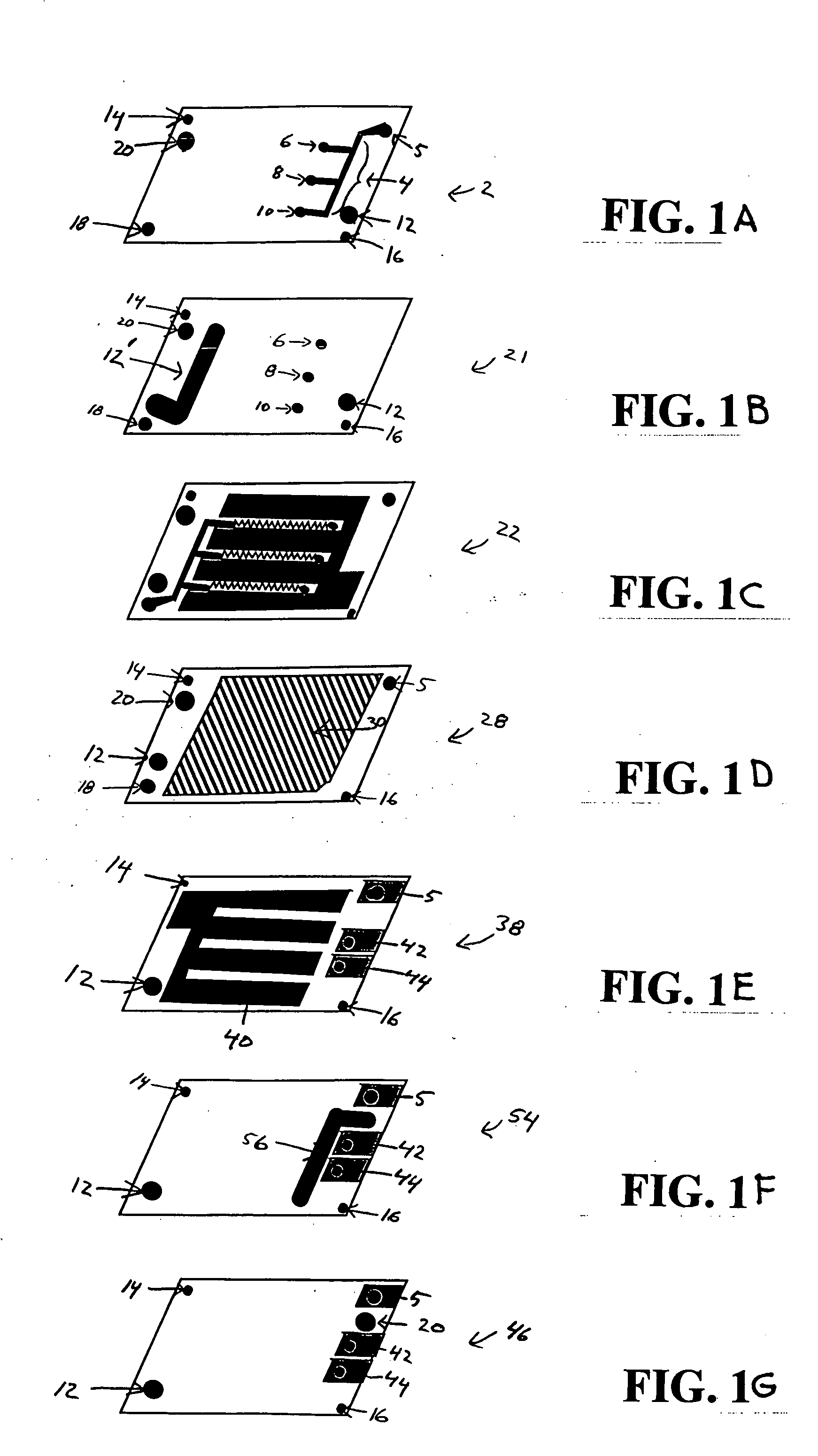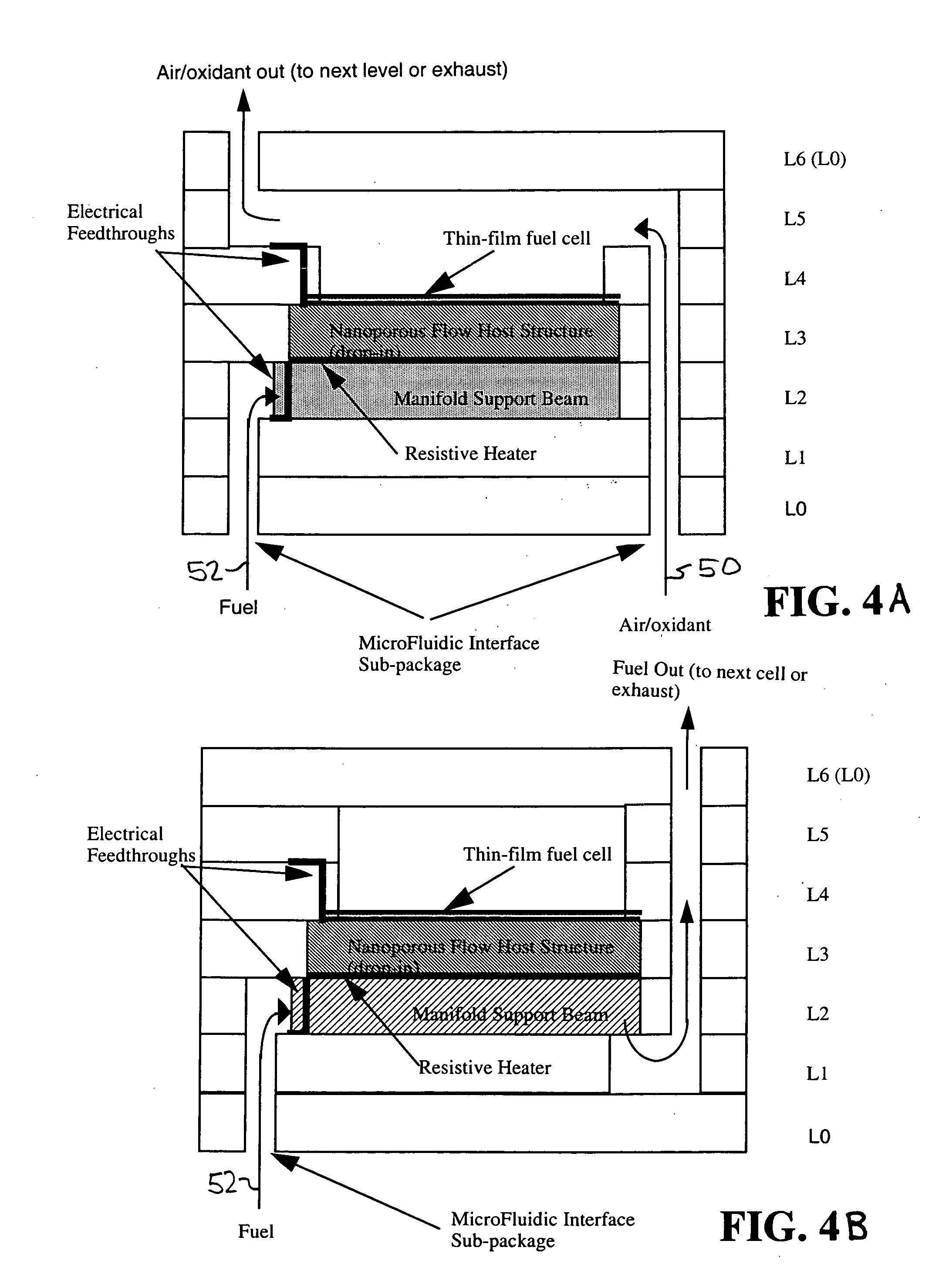Method of forming a package for MEMS-Based fuel cell
a fuel cell and fuel cell technology, applied in the field of forming a package for mems-based fuel cells, can solve the problems of excessive weight, size, cost, and limited mission duration of rechargeable and primary portable power sources
- Summary
- Abstract
- Description
- Claims
- Application Information
AI Technical Summary
Benefits of technology
Problems solved by technology
Method used
Image
Examples
Embodiment Construction
[0018] The invention herein describes a method of forming a package for a miniature fuel cell device. Illustrated in FIGS. 1A-1G is a preform layer of a seven layer fuel cell package. The package can be fabricated from a Low Temperature Co-fired Ceramic (LTCC), i.e., a ceramic green tape preform, such as Dupont 951 Green Tape, or a plastic or polymer preform, such as Dupont Kapton or Sylgard silicone. Methods to form the preform layers include laser cutting, injection molding, or extrusion molding of the ceramic or plastic.
[0019] Referring to FIG. 1A, the first layer of the package, a fuel reservoir interface 2, is fabricated from a ceramic green tape, molded ceramic, or a plastic preform. Fuel reservoir interface 2 comprises a resistive heater current input 4 having three electrical leads 6, 8, and 10, a fuel flow passage 12, a left side alignment pin 14, a right side alignment pin 16, and a grounded resistive heater feedthrough 18. Fuel reservoir interface 2 may also comprise an ...
PUM
| Property | Measurement | Unit |
|---|---|---|
| Temperature | aaaaa | aaaaa |
| Thickness | aaaaa | aaaaa |
| Thickness | aaaaa | aaaaa |
Abstract
Description
Claims
Application Information
 Login to View More
Login to View More - R&D
- Intellectual Property
- Life Sciences
- Materials
- Tech Scout
- Unparalleled Data Quality
- Higher Quality Content
- 60% Fewer Hallucinations
Browse by: Latest US Patents, China's latest patents, Technical Efficacy Thesaurus, Application Domain, Technology Topic, Popular Technical Reports.
© 2025 PatSnap. All rights reserved.Legal|Privacy policy|Modern Slavery Act Transparency Statement|Sitemap|About US| Contact US: help@patsnap.com



